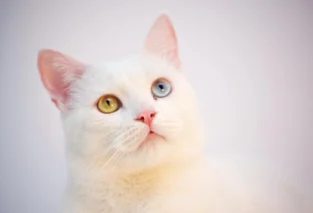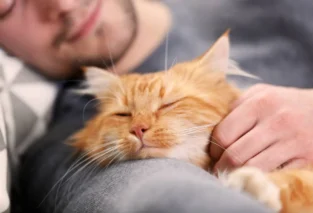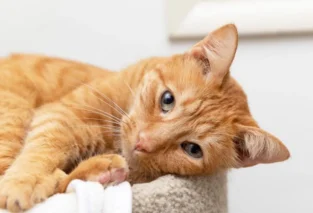Cat owners often ask the question, is dry or wet food better for cats? The answer is not black and white. Both types of cat food have upsides and downsides. In this article on wet versus dry cat food, we’ll go over all of the pros and cons to help you decide which is best for your cat.
Whether the food is dry or wet, look for foods that meet AAFCO standards. All commercial cat foods—whether dry or wet—provide all the nutrition cats need, as long as the food meets the standards established by the Association of American Feed Control Officials (AAFCO). The AAFCO label on a bag of cat food indicates that the food is nutritionally complete and balanced for the cat’s life stage.
The life stages include adult, kitten, pregnant and lactating females, and all life stages (any cat of any age).
Is Wet or Dry Food Better for Cats?
In theory, it shouldn’t matter if a cat eats dry food or wet food, but each type has its benefits and drawbacks.
Dry cat food, also known as dry kibble, is a highly processed, shelf-stable food. Dry cat food is good for a long time (sometimes a year or longer) in the original sealed bag. Look for a “best by” or “use by” date on the bag to find out if an unopened bag is still fresh.
Once opened, it’s best to use dry cat food within about six weeks. Although you might be tempted to transfer your dry cat food into a plastic container, it’s best to keep it in the original bag, which has a special liner designed to maximize the freshness of the food. Fold the top of the bag down all the way, squeezing out as much air as you can, and clip it closed, then store the bag in a cool, dry place.
Wet cat food, also known as canned food, is generally less processed than dry cat food, but also very shelf-stable. Unopened cans, trays, and pouches of wet cat food last a long time, usually several years.
Also Read: Are Cats Smarter Than Dogs? Scientists Finally Have the Answer
As with dry food, look for a “best by” or “use by” date on the can, tray, or pouch to determine if unopened wet cat food is still good. Once opened, wet cat food is highly perishable. Wet food can be left out for only a few hours before it will spoil, and leftovers must be refrigerated. Use wet cat food within five to seven days of opening it.
Dry Cat Food Pros and Cons
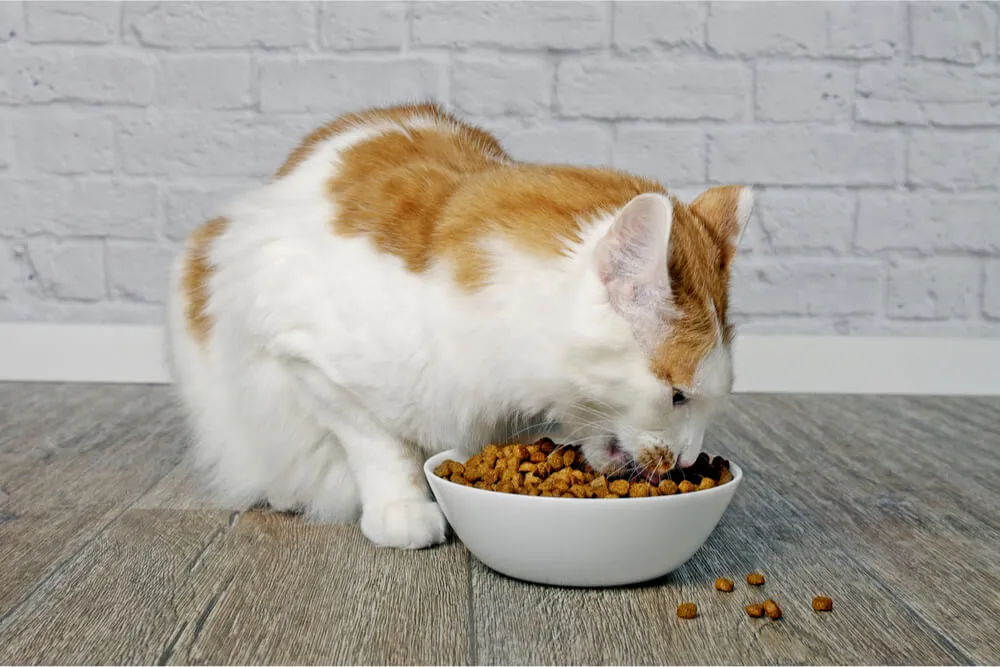
Dry cat food is convenient to store, easy to serve, and nutrient-dense.
On the flip side, compared with wet cat food, dry cat food is usually higher in carbohydrates and has less protein (especially animal protein). Although cats can digest and absorb beneficial nutrients from carbohydrates, cats have no minimum nutritional requirement for carbohydrates.
Cats are obligate carnivores, meaning that they require animal protein in their diet. Wild cats eat very little carbs, if any, as their diet consists mainly of eating small prey animals.
These small prey animals have high amounts of protein and moderate amounts of fat. Dry cat food is a less natural type of diet for cats, although domestic cats have evolved to live and thrive on dry cat foods.
Although you may have heard that dry food is better for your cat’s teeth because it scrapes the teeth clean, this is generally untrue for several reasons. For example, the kibble is so small that it crumbles easily in a cat’s mouth. Also, cats swallow rather than chew their food, so they’re not munching on dry food.
In general, dry cat food is no better for your cat’s teeth than wet food, and it no more keeps a cat’s teeth clean than eating crackers or cereal would keep your teeth clean.
Read More: 75 Summer-Themed Cat Names With Meanings
However, some dry cat foods have been specially developed to help remove tartar from a cat’s teeth. These special dental health foods, which have received the seal of acceptance from the Veterinary Oral Health Council (VOHC), include these listed here:
- Hill’s Prescription Diet Feline t/d
- Hill’s Science Diet Oral Care for Cats
- Hill’s Healthy Advantage Oral+ for Cats
- Purina Pro Plan Veterinary Diets DH Feline Formula
- Royal Canin Feline Dental Diet
A big plus of dry food is that you can keep it out all day. This is great for cats that like to nibble throughout the day. However, cats don’t exactly have a sense of portion control, so free-choice feeding can easily add on extra pounds. Cats that are overweight should not have their dry food left out all day.
Dry Cat Food Pros
- Affordable
- Long shelf life
- Convenient (easy to serve and can be left out)
- More energy-dense than wet food
- Many cats love the crunch and taste
Dry Cat Food Cons
- Lower water content than wet food
- Contains less protein, especially animal protein, than most wet foods
- Contains more carbohydrates than wet foods
- May be difficult for cats with dental issues or missing teeth
- Cats may overeat if the food stays in the bowl all day
Wet Cat Food Pros and Cons
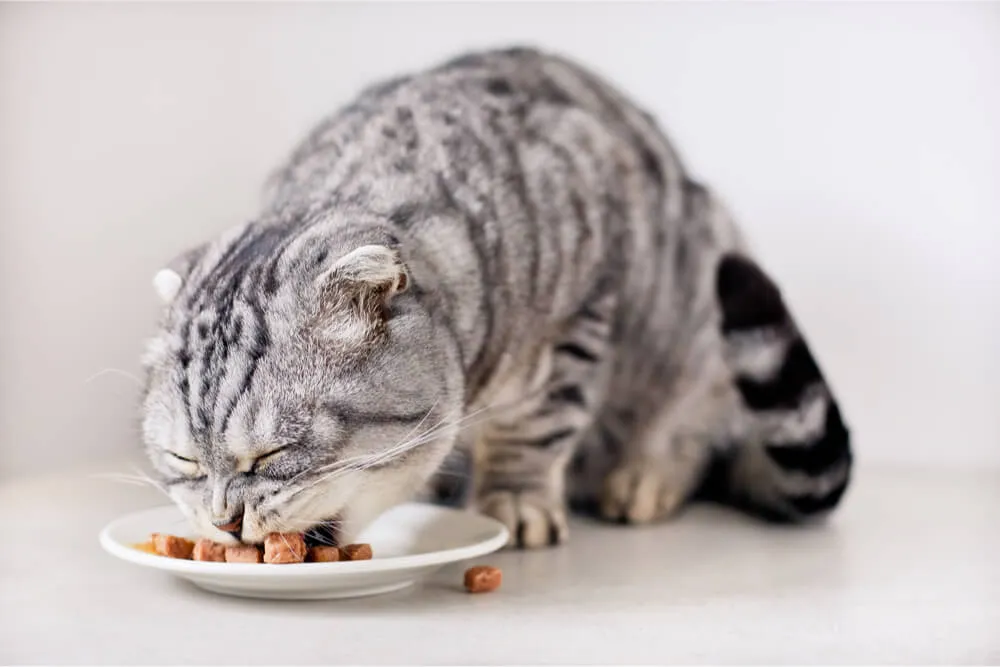
Wet cat food offers many health benefits, including high water content and more protein than dry cat food.
Because of extra water content, wet food is great for cats that need to increase their water intake, such as cats with urinary tract disease like kidney disease, urinary crystals, or cystitis (inflammation of the bladder). Low-carbohydrate diets are sometimes recommended for diabetic cats, and wet cat food generally meets that requirement.
Wet cat food also contains more protein than dry cat food, especially animal protein. Cats, being obligate carnivores, are made to consume and digest high amounts of animal protein, moderate amounts of fat, and minimal amounts of carbohydrates. Wet food checks all of those boxes nicely.
Many cats love the taste of wet food, especially picky eaters and older cats. Older cats with dental problems benefit from the soft texture of wet food.
One of the biggest disadvantages of wet cat food is cost. Even though wet cat food’s high moisture content is a good thing, all that extra water weight makes the food less nutrient-dense. So, you have to buy and feed more wet food to make sure your cat gets all of the nutrients they need. Also, ounce for ounce, wet food costs more than dry food.
Another downside of wet food is that it’s quickly perishable. You have to pick up your cat’s food after a few hours or it will spoil. This can be hard for cats that prefer to nibble throughout the day, especially if you’re not home and can’t feed three or four small meals a day.
Leftovers must be promptly refrigerated. When stored in the fridge in an airtight container, some commercial food companies state that opened canned food might last as long as five to seven days. However, it’s best to use up leftover wet food within 72 hours, so stay on top of what’s left in the fridge. Marking the date on the can of food can help you do that.
Wet Cat Food Pros
- Higher water content than dry food
- More protein, especially animal protein, than most dry food
- Fewer carbohydrates than dry food
- Long shelf life when unopened
- Very good flavor
- Good for cats with dental issues or missing teeth
Wet Cat Food Cons
- Expensive
- Less energy-dense than dry food
- Quickly perishable once opened (must be refrigerated)
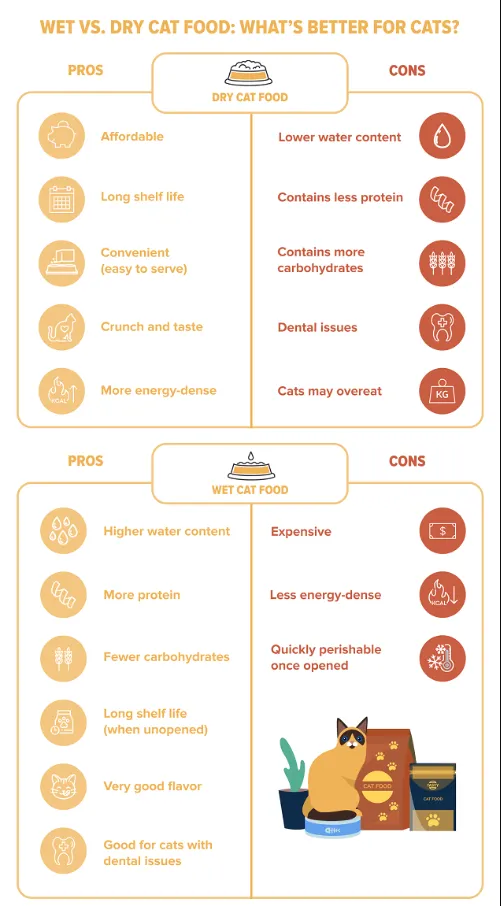
Mixing Wet and Dry Cat Food: The Best of Both Worlds
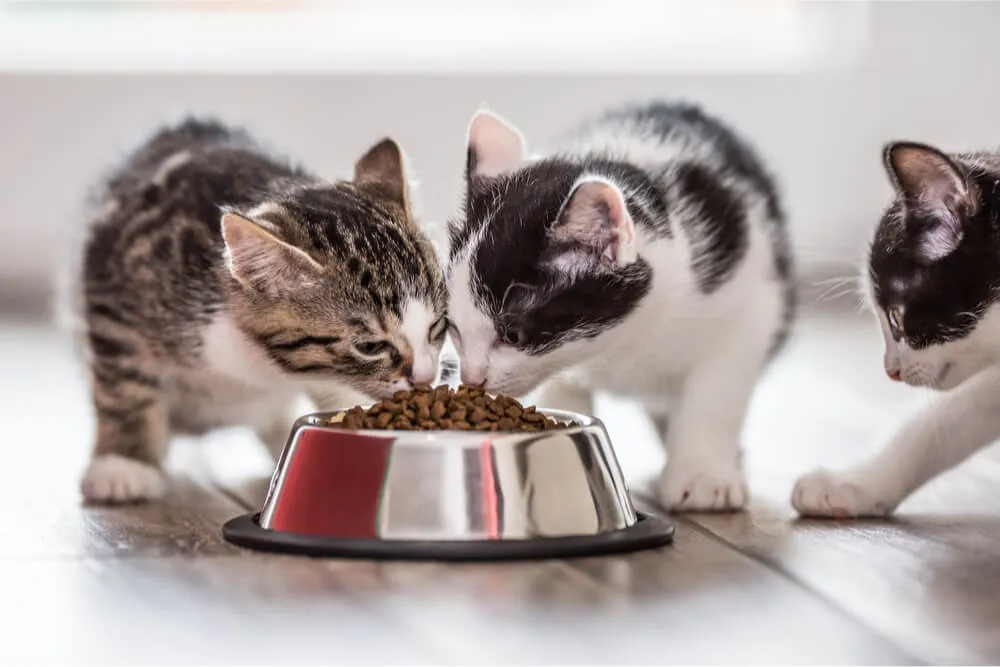
To avoid picky eating habits later in life, offer kittens both dry food and wet food.
If you’re torn about whether to feed your cat dry food or wet food, consider offering both. You might serve one meal of dry food in the morning before you leave for work, then offer wet food in the evening once you return home. Or, if your cat tends to eat her food all at once, mix the two types together. Any amount of wet food can boost your cat’s overall diet with extra water and protein.
If you have a kitten, offer dry and wet food early on. Cats usually develop preferences for taste and texture early in kittenhood. If your kitten eats only dry food, she might turn her nose up at wet food in the future (and vice versa).
Also Read: Siberian Cat Guide: Care, Personality & Tips
For all cats, always offer plenty of fresh, clean water.
Ask your veterinarian for advice if you are still wondering about the best food for your cat, especially if your cat has specific health issues like kidney disease or diabetes.



